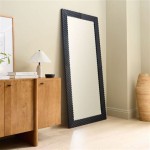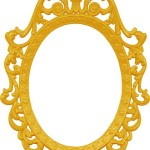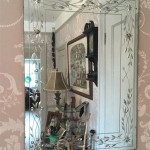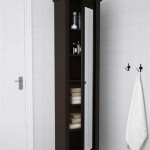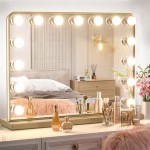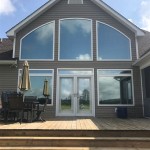How Images Are Formed in Concave Mirrors
Concave mirrors, also known as converging mirrors, possess a reflecting surface that curves inward, resembling the interior of a sphere. This unique shape allows them to focus incoming parallel light rays to a specific point known as the focal point. The distance between the mirror's surface and this focal point is termed the focal length. Understanding the properties of concave mirrors and their interaction with light is essential for comprehending how they form images.
Key Point 1: Principal Axis and Focal Point
The principal axis is an imaginary line passing through the center of curvature (C) and the pole (P) of the mirror. The center of curvature is the center of the sphere from which the mirror is notionally a part. The pole is the center of the mirror’s reflecting surface. The focal point (F) lies midway between the center of curvature and the pole, meaning the focal length is half the radius of curvature.
Key Point 2: Ray Diagrams
Ray diagrams are graphical tools used to determine the characteristics of images formed by concave mirrors. By tracing the path of specific light rays emanating from the object, the location, size, orientation, and nature (real or virtual) of the image can be determined. Typically, two or three specific rays are used for these diagrams.
A ray parallel to the principal axis, after reflection, passes through the focal point. A ray passing through the focal point, after reflection, travels parallel to the principal axis. A ray passing through the center of curvature strikes the mirror perpendicularly and reflects back along the same path.
Key Point 3: Image Formation Beyond C
When the object is located beyond the center of curvature (C), the image formed is real, inverted, and diminished in size. This means the image can be projected onto a screen, appears upside down compared to the object, and is smaller than the object. The image forms between the center of curvature (C) and the focal point (F).
Key Point 4: Image Formation at C
When the object is placed exactly at the center of curvature (C), the image formed is also located at C. This image is real, inverted, and the same size as the object. This specific case demonstrates a 1:1 image-to-object size ratio.
Key Point 5: Image Formation Between C and F
When the object is placed between the center of curvature (C) and the focal point (F), the image formed is real, inverted, and magnified. The image forms beyond the center of curvature (C), making it larger than the object.
Key Point 6: Image Formation at F
If the object is placed exactly at the focal point (F), no real image is formed. The reflected rays are parallel and do not converge. In this case, the image is considered to be at infinity.
Key Point 7: Image Formation Between F and P
When the object is located between the focal point (F) and the pole (P), the image formed is virtual, upright, and magnified. A virtual image cannot be projected onto a screen. It appears to be behind the mirror and is larger than the object. This is the principle behind the magnifying effect of concave mirrors, often utilized in makeup mirrors or shaving mirrors.
The nature and characteristics of the image formed by a concave mirror are dependent upon the object's distance from the mirror relative to the focal point and the center of curvature. By utilizing ray diagrams and understanding the principles of reflection, the properties of these images can be accurately predicted and understood.
Various applications exploit the image-forming properties of concave mirrors. Telescopes use them to gather and focus light from distant celestial objects. Solar furnaces concentrate sunlight to generate high temperatures. Headlights and flashlights utilize concave reflectors to create directed beams of light. Understanding the underlying principles of image formation in concave mirrors is therefore crucial in numerous optical systems and applications.

Concave Mirror Image Formation Ray Diagrams Conditions Mechanism

Concave Mirror Image Formation Ray Diagrams Conditions Mechanism

Image Formation By Spherical Mirror Geeksforgeeks

Where Is The Image Formed For A Point Object In Front Of Concave Mirror Quora

How Is The Image Formed By A Spherical Mirror Plus Topper Apoppersphericalmirrorimages Physics Formulas Form

Image Formation By Concave Mirrors

Image Formation By Spherical Mirror Geeksforgeeks

Concave Mirrors And Convex Image Formation Ray Diagram

Images Formed By Spherical Mirrors Using Ray Diagrams 88guru

What Is The Nature Of Image Formed By A Concave Mirror Real And Invertedb Virtual Erectc Depends On Position Objectd Erect


